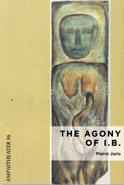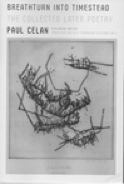On the Caricatures II
Die Welt today prints an interview with Günter Grass from El Pais on the cartoon conflict. Grass believes the West is entirely to blame and recommends that Islamic taboos be heeded:
We have lost the right to seek protection under the right to the freedom of expression. The days of lese-majeste are not so far behind us and we should not forget that there are places in the world where there is no of separation Church and State. Where does the West get this arrogance to want to decree what one can and can’t do? I recommend that everybody take a closer look at the caricatures: they are reminiscent of the famous newspaper of the Nazi era, the Stürmer, which published anti-Semitic cartoons of a similar style.
Also a rather interesting piece on the cartoons at Salon.com. Here two extracts:
Muslim touchiness about Western insults to the prophet Mohammed must be understood in historical context. Most Muslim societies have spent the past two centuries either under European rule or heavy European influence, and most colonial masters and their helpmeets among the missionaries were not shy about letting local people know exactly how barbaric they thought the Muslim faith was. The colonized still smart from the notorious signs outside European clubs in the colonial era, such as the one in Calcutta that said, “Dogs and Indians not allowed.”
Indeed, the same themes of Aryan superiority and Semitic backwardness in the European “scientific racism” of the 19th and early 20th centuries that led to the Holocaust against the Jews also often colored the language of colonial administrators in places like Algeria about their subjects. A caricature of a Semitic prophet like Mohammed with a bomb in his turban replicates these racist themes of a century and a half ago, wherein Semites were depicted as violent and irrational and therefore as needing a firm white colonial master for their own good.
(It is worth noting that in 2004 the Danish editor who commissioned the drawings, Flemming Rose, conducted an uncritical interview with the American neoconservative and Islamophobe Daniel Pipes. Pipes, an extreme right-wing supporter of the Israeli colonization of the Palestinian West Bank, has warned of the dangers of Muslim immigration into Denmark, claiming that “many of them show little desire to fit into their adopted country” and that male Muslim immigrants made up a majority of the country’s rapists.)
……
Rather than merely an East-West issue or a clash of civilizations, the caricature controversy should be seen as part of a culture war within Muslim societies. Precisely because the issue is distant and not very important, it is a cost-free bandwagon on which everyone can jump in search of greater legitimacy among Muslim publics. There is no downside in the Muslim world to defending the prophet Mohammed from Western insults. Pro-American politicians such as Abul-Gheit can use it to burnish their nationalist image, while Sistani can embrace the campaign as part of his old rivalry with the Sadr movement. The cleric Tantawi can employ it to boost his popularity among the rank and file in Egypt and to offset the popularity of the lay fundamentalist Muslim Brotherhood. It can be used to mobilize Muslims in Kashmir who care a great deal more about Indian repression than about Danish newspapers.
The Bush administration’s impulsive intervention in Middle Eastern affairs has heated up the internal Muslim culture wars to the boiling point — and ironically strengthened those very radical, pan-Arab and Islamist forces that Bush wanted to check. Bush handed Muqtada al-Sadr his current platform, which calls for the withdrawal of U.S. and other foreign troops from Iraq immediately, and which promises that Iraqi Shiites will defend Iran and Syria from an American attack. (The ruling elites of both Iran and Syria are Shiite.) Sistani would not feel the same need to compete with Muqtada by attacking the West if the Americans had not occupied Iraq in so thorough-going, arrogant and incompetent a manner. Bush’s pressure on the Syrian regime is an important background to the Damascus and Beirut riots. Pamphlets passed out before the Beirut demonstration denounced the U.S. presence in Iraq, and an attack on a church in Beirut is a symbolic strike at the United States, perceived as a foreign Christian power intervening in Muslim affairs.

 “Interglacial Narrows (Poems 1915-2021)” Contra Mundum Press
“Interglacial Narrows (Poems 1915-2021)” Contra Mundum Press “Always the Many, Never the One: Conversations In-between, with Florent Toniello” Contra Mundum Press
“Always the Many, Never the One: Conversations In-between, with Florent Toniello” Contra Mundum Press “Conversations in the Pyrenees”
“Conversations in the Pyrenees” “A Voice Full of Cities: The Collected Essays of Robert Kelly.” Edited by Pierre Joris & Peter Cockelbergh
“A Voice Full of Cities: The Collected Essays of Robert Kelly.” Edited by Pierre Joris & Peter Cockelbergh “An American Suite” (Poems) —Inpatient Press
“An American Suite” (Poems) —Inpatient Press “Arabia (not so) Deserta” : Essays on Maghrebi & Mashreqi Writing & Culture
“Arabia (not so) Deserta” : Essays on Maghrebi & Mashreqi Writing & Culture “Barzakh” (Poems 2000-2012)
“Barzakh” (Poems 2000-2012) “Fox-trails, -tales & -trots”
“Fox-trails, -tales & -trots” “The Agony of I.B.” — A play. Editions PHI & TNL 2016
“The Agony of I.B.” — A play. Editions PHI & TNL 2016 “The Book of U / Le livre des cormorans”
“The Book of U / Le livre des cormorans” “Memory Rose Into Threshold Speech: The Collected Earlier Poetry of Paul Celan”
“Memory Rose Into Threshold Speech: The Collected Earlier Poetry of Paul Celan” “Paul Celan, Microliths They Are, Little Stones”
“Paul Celan, Microliths They Are, Little Stones” “Paul Celan: Breathturn into Timestead-The Collected Later Poetry.” Translated & with commentary by Pierre Joris. Farrar, Straus & Giroux
“Paul Celan: Breathturn into Timestead-The Collected Later Poetry.” Translated & with commentary by Pierre Joris. Farrar, Straus & Giroux